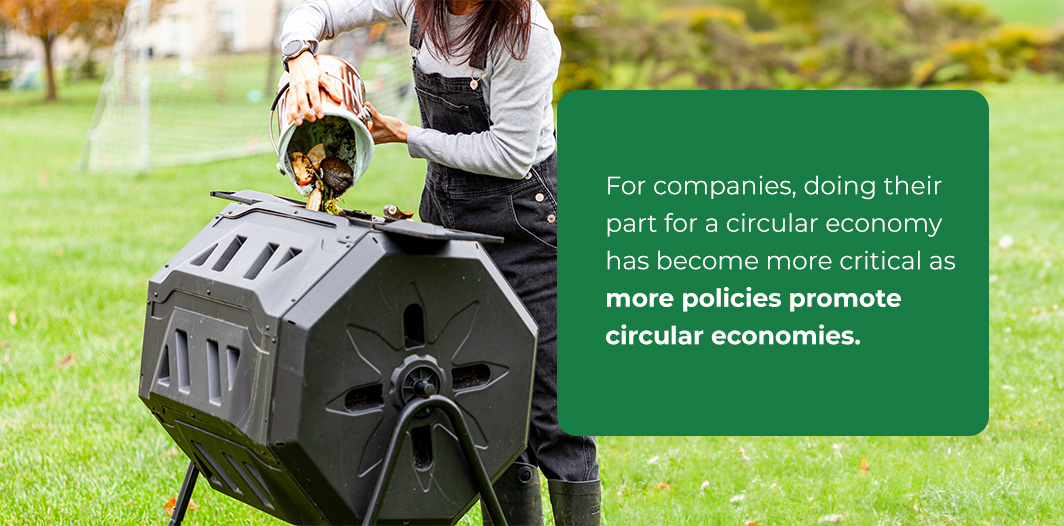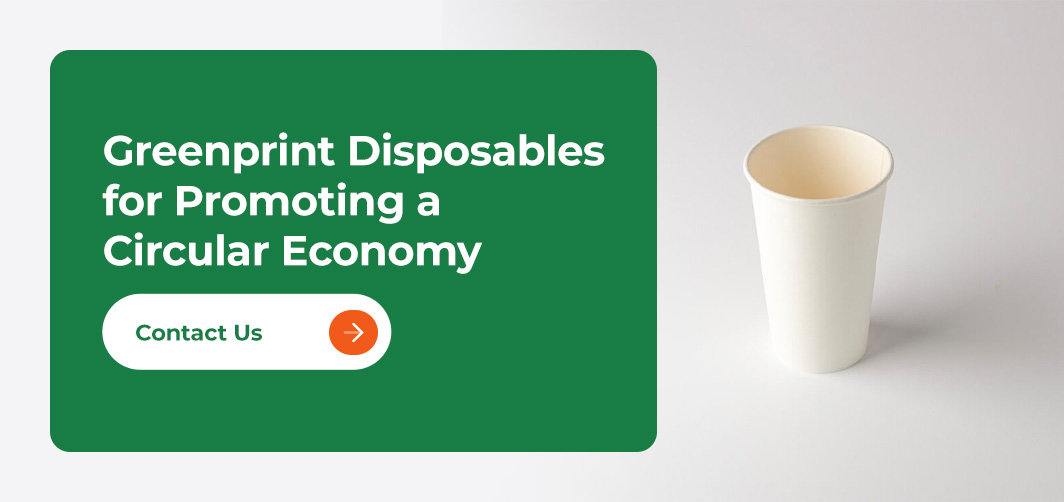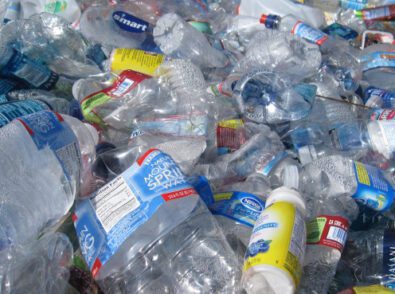Circular Economy and Sustainability

In a linear economy, we get our resources from the earth and discard them as waste when we are no longer using them. This economy is also known as the take-make-replace or take-make-use-dispose. Our current economy is linear, and though that comes with many downfalls, there are ways that we can change that. Adopting a circular economy is one way to combat the wastefulness of a linear economy. In a circular economy, we avoid creating products that lead to waste and focus on using resources in renewable and sustainable ways.
What Is a Circular Economy?
A circular economy is a way of producing and consuming products so that the raw materials and resources you use are in circulation for as long as possible. Circular economy principles include:
- Eliminating waste and reducing pollution.
- Circulating resources and products.
- Replenishing and growing the environment.
There are many ways to promote these principles, including recycling, reusing, refurbishing, and repairing. Even leasing and sharing products encourages a circular economy. Through these methods, you extend the shelf life of products. Because you can use such products repeatedly, the value they create also increases.
Another key feature of circular economies includes distinguishing between being a consumer and a user. Only biological items are consumable in a circular economy, and all other materials are used. This is a subtle but important difference that raises the question of what one really needs to buy and own. For example, you either need to purchase or grow your own food, but either way, the food you consume is your own. On the other hand, you may consider buying a drill that you will rarely use or simply rent one.
Circular Economy Examples
A circular economy is something industries and individuals can implement across the board. From housing and transport to food and dining, clothing, energy and even art—there are many examples of circular solutions, including:
- Rendering: Rendering is a process that uses discarded animal products and old cooking oil to make pet feed, hygiene products, and biofuels.
- Recycling: Recycling and repurposing products extends their life span.
- Reusing: Repairing items rather than replacing them when possible reduces the need for new products.
- Leasing: Hiring products that one won’t use often is an excellent alternative to owning new products.
- Using sustainable products: Sustainable products made from renewable resources are the way of the future. These products can be everything from cutlery and plates to clothing, furniture, gas, and technology.
Why Circular Economies Are Important

Contrary to being mere wishful thinking or a green trend, circular economies are vital to the well-being of individuals, businesses, markets, and the environment. On the surface, it may seem that circular economies revolve around lessening consumerism as a waste management solution. While that is true to some degree, the impact of a circular economy is much more profound—you can see the benefits at every stage of the life cycle of products from conception to disposal. For companies, doing their part for a circular economy has become more critical as more policies promote circular economies and prioritize environmental awareness and transparency.
Naturally, another vital aspect of a circular economy is that it is essential for tackling climate change. The process of extracting materials is responsible for half of the world’s greenhouse gas emissions. With a circular approach that reuses and refurbishes products, the alarming figures associated with material extractions will come down considerably.
The Benefits of Circular Economies
Circular economies naturally promote sustainability and eco-friendly designs. Additionally, they also encourage you to send money wisely, to only invest in necessary items, and to avoid poorly made products that will not last long. A circular economy teaches the mindset of investing in quality items that you and others can use repeatedly. There are other broader benefits to a circular economy, too:
- Circular economies reduce dependency on nonrenewable resources and, in turn, help protect natural systems and regenerate the environment.
- Circular economies tackle the issue of planned obsolescence. Planned obsolescence is when manufacturers design a product to have a limited life span. It leads to consumers having to purchase the same product again when it breaks or becomes outdated so that it no longer functions as needed. A circular economy will encourage policies regarding planned obsolescence.
- The model opens up markets and makes products more accessible. It also shows which services are important compared to which products are important, and this can lead to potential job creation.
- Circular economies help lower carbon emissions and combat climate change since they rely on keeping products in circulation for as long as possible compared to extracting resources to constantly make new items that we will only discard again.
- Zero waste lifestyles are possible with circular economies.
- Users benefit from this economy—you enjoy more options that make services accessible and financially viable through sharing, leasing, or buying used items.
How You Can Contribute to a Circular Economy
If you would like to encourage a circular economy, you educate yourself and others and also advocate for policies that promote sustainable changes to the way you live. Other ways that you can contribute to a circular economy include:
- Reducing your consumption by not purchasing unnecessary goods. Choose to share or rent products when you can.
- Using sustainable products. A circular economy and sustainability go hand in hand, as sustainable products rely on renewable or recycled materials.
- Opting for good quality products that have a longer shelf life.
- Purchase quality used products to reduce consumption.
- Maintaining your products to extend their shelf life, as does choosing to repair or reuse items over purchasing brand new products.
- Choosing to purchase from circular businesses, that is, businesses that specifically design and manufacture products for circularity. When you buy from a circular company, you support vital concepts, including market transparency, innovation, and sustainability.
Every small bit counts toward moving away from the old linear way of consumption. Simply being more mindful of your buying habits goes a long way toward promoting a circular economy.
Greenprint Disposables for Promoting a Circular Economy
At Greenprint, we strive to make the blueprint of the disposables industry more sustainable. We design and manufacture a range of high-quality products, including biodegradable agave and paper cups, biodegradable straws and stirrers, compostable clamshells and plates, and biodegradable cutlery. We use locally sourced materials. and innovative, forward-thinking to create products that have a long-term and positive effect on industries and the environment.
With our products, restaurants and patrons can promote a circular economy by moving away from single-use plastics and making disposables a sustainable part of the dining experience. Browse our collection or contact us today for any additional questions or support.






